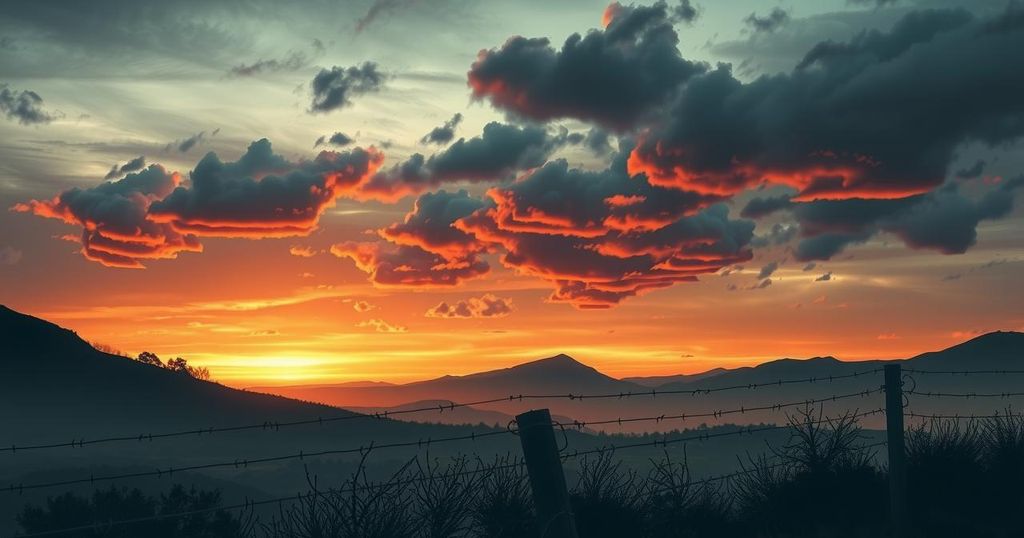The M23 rebel group claims control over Goma, raising concerns about escalating conflict in the DRC and tensions with Rwanda. The DRC government disputes the claim, asserting control over key regions amid reports of increased violence and displacement. Humanitarian access is severely impacted as soldiers surrender and civilians flee, reflecting a worsening humanitarian crisis.
The M23 rebel group has claimed victory over the city of Goma, a crucial area in eastern Democratic Republic of Congo (DRC). While the government disputed the claim, it acknowledged increased tensions between the DRC and Rwanda, which supports the rebels. Reports indicate considerable panic among Goma’s residents, with M23 urging calm while asserting control over the city.
Evidence of the fighting emerged as some government soldiers surrendered their weapons, and videos surfaced showing M23 patrols in Goma. Additionally, UN officials stated that the city is becoming isolated from humanitarian assistance as access routes are blocked. The government maintains that they control strategic military sites, including the airport.
As clashes escalate, heavy artillery strikes have reportedly hit central Goma, causing power and water disruption. With tens of thousands of civilians fleeing, the conflict reflects a troubling ongoing humanitarian crisis in the region. Over 400,000 individuals have been displaced since January, underscoring the dire situation.
The M23 group originated in 2012, established to defend the Tutsi population amid ongoing violence in the area. Although previously expelled, they have resurfaced, encouraged by alleged Rwandan military support. The DRC accused Rwanda of backing M23, while Rwanda has refrained from confirming direct involvement.
UN Secretary-General António Guterres urged Rwanda to cease military assistance to M23, highlighting the volatile nature of the conflict. The dual accusations underscore Rwanda’s concern for its own security, asserting that DRC government shelling poses a threat to civilians across the border. The situation remains precarious with various peacekeeping forces engaged in combat.
The apparent fall of Goma marks a significant shift in the ongoing struggle against insurgency in the DRC. As humanitarian resources dwindle, there are growing fears of wider conflict involving neighboring countries. The evolving chaos in this critical region exemplifies the potential for broader instability throughout Africa’s Great Lakes Region.
The conflict in the eastern Democratic Republic of Congo (DRC) is rooted in deep historical grievances, mineral wealth disputes, and ethnic tensions. Various armed groups, including M23, have emerged over the years, often supported by neighboring countries like Rwanda. The area has witnessed decades of violence and instability, leading to a severe humanitarian crisis with millions displaced. The UN and other international bodies are working to stabilize the region but face significant challenges amid persistent violence.
In summary, the capture of Goma by M23 rebels signifies a troubling escalation in the long-standing conflict in eastern DRC, raising alarms about potential wider regional conflict. The humanitarian crisis exacerbated by military actions has left many civilians vulnerable, as international efforts to mitigate violence continue. The involvement of foreign forces complicates the situation further, necessitating urgent diplomatic attention to avert a larger crisis.
Original Source: www.twz.com






